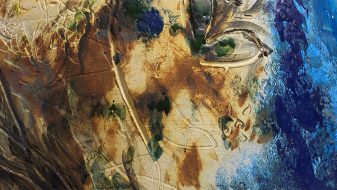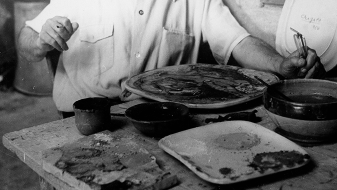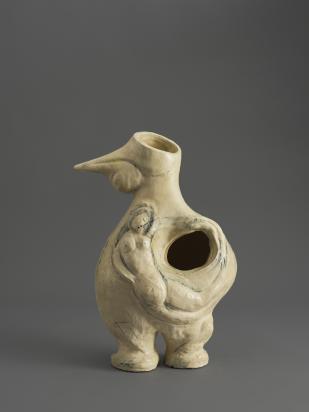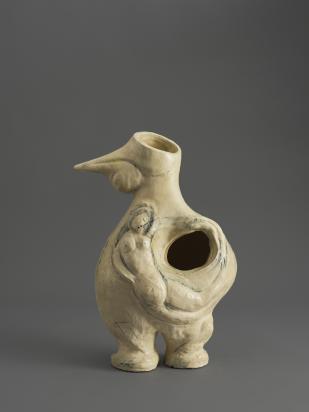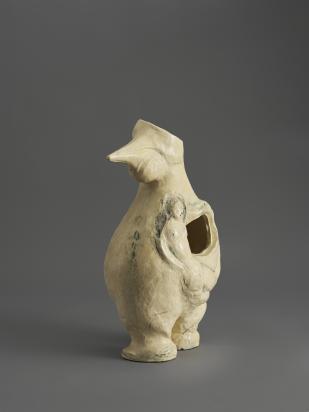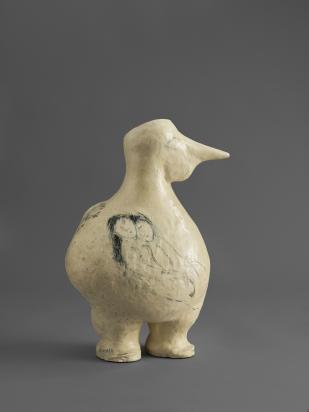In 1954, Chagall made The Rooster, a zoomorphic piece typical of his Madoura studio output and of “sculpture-vases1”. It bears witness to the experiments with form carried out by him and the studio's craftsmen, who sought to erase the boundaries between sculpture and ceramics by turning and modelling pieces in which volume takes precedence. There is another piece Rooster [Le Coq] (1954) with the same shape but different decoration. The greyish-beige barnyard bird has a potbelly, short legs and a cavity in its back around which the finely engraved silhouette of a woman stretches out in an arc. The belly is engraved with an embracing couple outlined in black, recalling Chagall’s prints and black and white lithographs from the 1950s and 1960s as well as Asian calligraphy2. Under the guidance of Suzanne Ramié and the Madoura studio craftsmen, Chagall used this graphic motif, finely incised in the still-raw clay, to highlight the elements and bring figures to life on the surface of the pieces, in the tradition of sgraffito3. It allowed him to stretch the technical possibilities of ceramics and create his own vocabulary with which painting, drawing, sculpture and ceramics dialogue in synergy. The Rooster’s proportions play up the contrast between its rotund belly and short legs, giving the piece a whimsical, humorous look not unlike the depictions of animals in Russian folk ceramics and loubki4. The animal’s bulging shape also echoes pre-Columbian ceramics, such as those produced in western Mexico’s Jalisco and Nayarit states5. The cavity, an aesthetic and functional feature, allows The Rooster to serve as a vase. Beyond its utilitarian function, the opening is also a call to the senses and to listening to the sounds of the material, resembling those of seashells that are held up to the ear to listen to the sound of the sea6.
AMBRE GAUTHIERCeramic
The Rooster
(Le Coq)
- No. C-254
- 1954
- Vase
- white clay, decorated with oxides on white enamel, engraved with a knife and dry point needle
- 18 7/8 x 9 1/16 x 13 3/4 in. (48 x 23 x 35 cm)
-
Signed Chagall Marc on the foot
- Pottery studio: Madoura
- Private collection
Keywords:
Animals (rooster), Nude(s), Love (couple / lovers)

